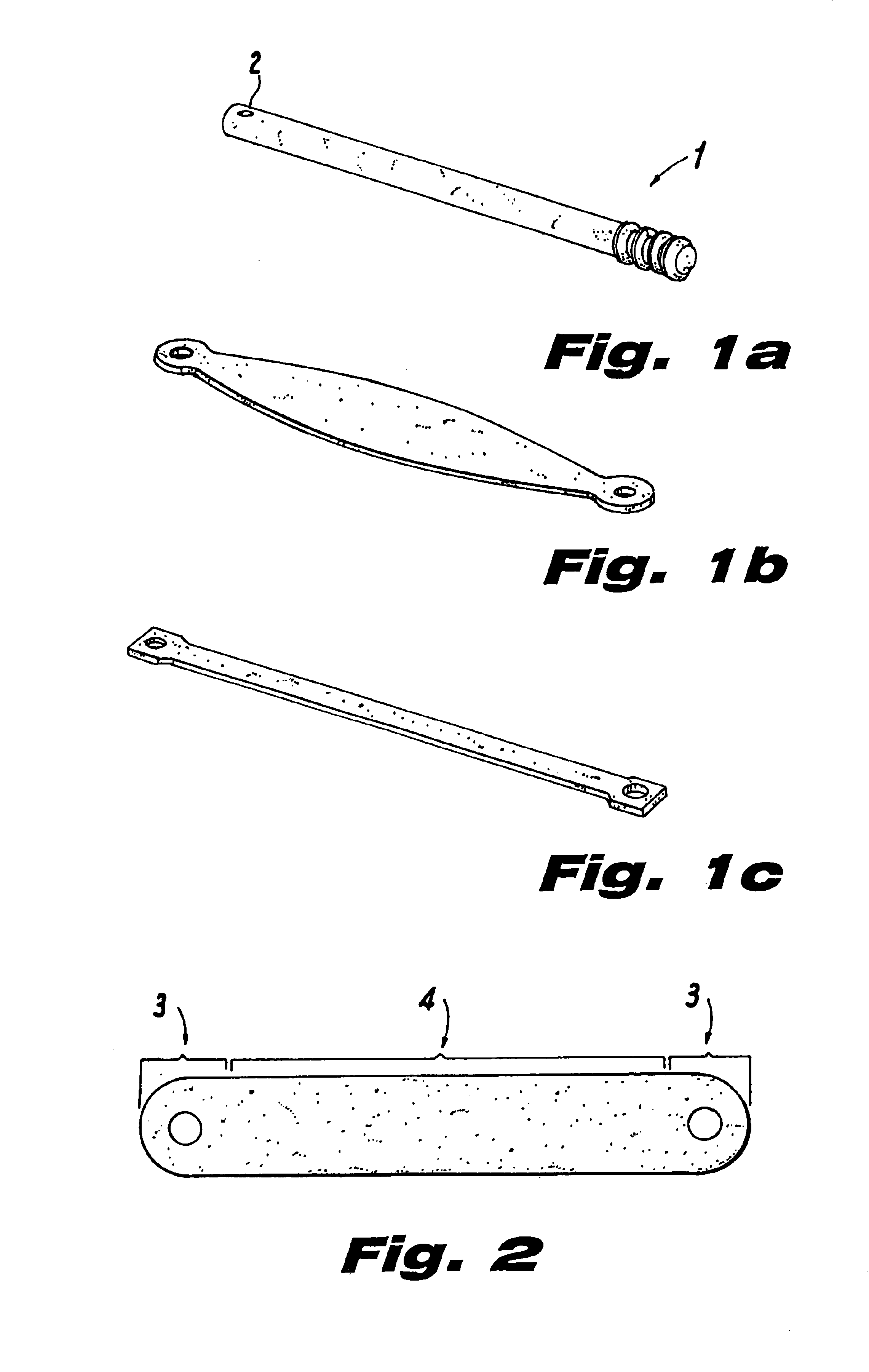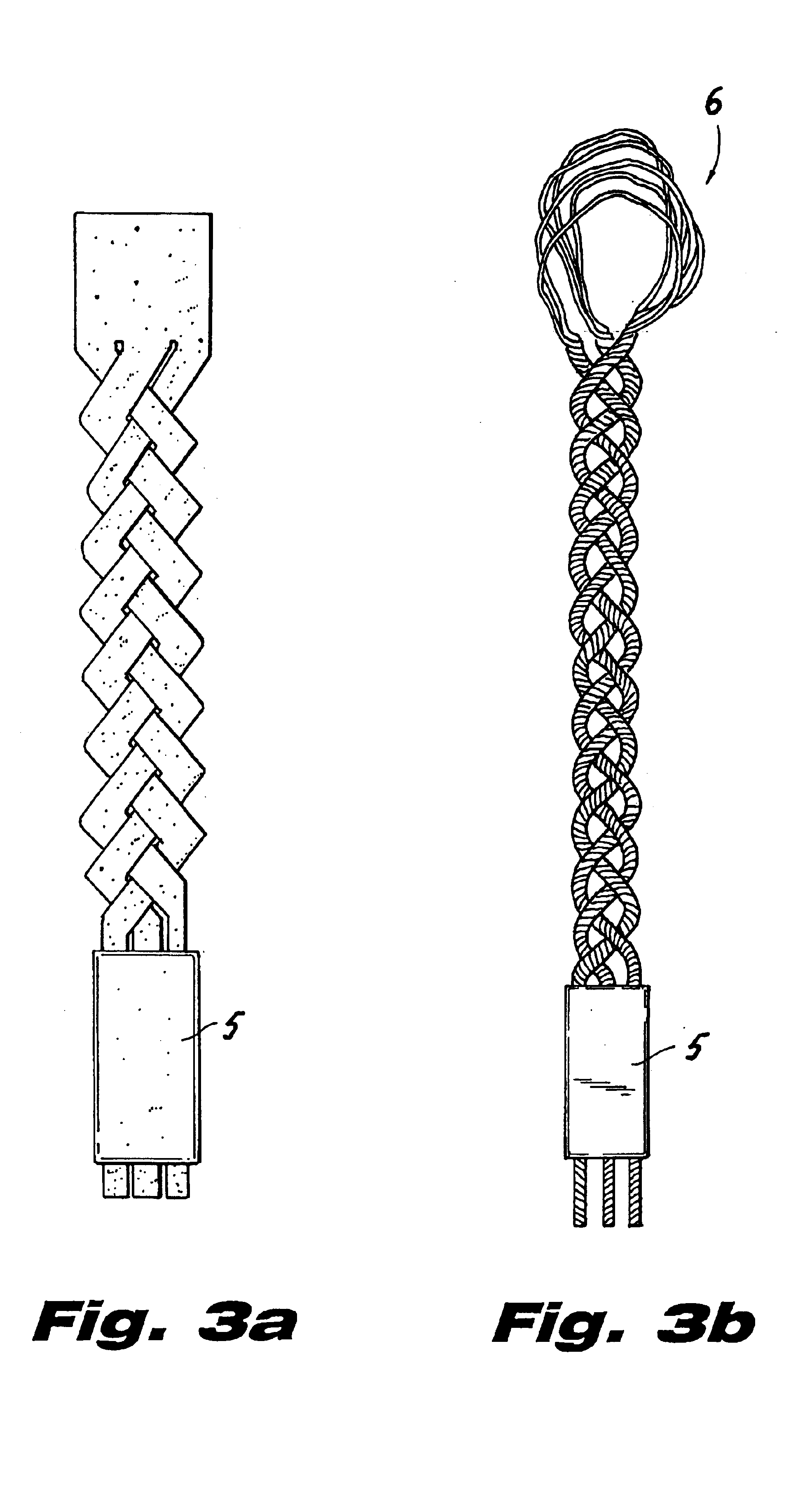Biocompatible osteogenic band for repair of spinal disorders
a biocompatible, band-like technology, applied in the field of spinal disorders, can solve the problems of affecting the healing effect of patients with the aforementioned disorders, affecting the healing effect of patients, so as to achieve the effect of reducing pain, reducing pain, and reducing pain
- Summary
- Abstract
- Description
- Claims
- Application Information
AI Technical Summary
Benefits of technology
Problems solved by technology
Method used
Image
Examples
Embodiment Construction
Band Tensile Tests
Specimens were prepared from diaphyseal human cortical bone by first making transverse cuts to prepare a diaphyseal segment of the appropriate length, followed by longitudinal cuts. In this way, four segments were made having length 6 mm; and four segments were made having length 10 mm. The width and thickness of each test article was measured using a Mitutoyo Model 500-196CE digital caliper. Thicknesses were measured at three sites each and averaged (Table). Widths of the segments were also measured at three locations and averaged (Table). One specimen of the 6 mm length and one specimen of the 10 mm length were each covered on their ends by an elastic (synthetic rubber) balloon, fitted tightly around the piece. Other specimens were not masked in this way. All specimens were demineralized using 15 mL of 0.6N HCl acid per gram of weight, for 3 days, when all unmasked regions were well demineralized and flexible.
A uniaxial servo-hydraulic test machine (MTS model 858...
PUM
| Property | Measurement | Unit |
|---|---|---|
| width | aaaaa | aaaaa |
| thickness | aaaaa | aaaaa |
| thickness | aaaaa | aaaaa |
Abstract
Description
Claims
Application Information
 Login to View More
Login to View More - R&D
- Intellectual Property
- Life Sciences
- Materials
- Tech Scout
- Unparalleled Data Quality
- Higher Quality Content
- 60% Fewer Hallucinations
Browse by: Latest US Patents, China's latest patents, Technical Efficacy Thesaurus, Application Domain, Technology Topic, Popular Technical Reports.
© 2025 PatSnap. All rights reserved.Legal|Privacy policy|Modern Slavery Act Transparency Statement|Sitemap|About US| Contact US: help@patsnap.com



